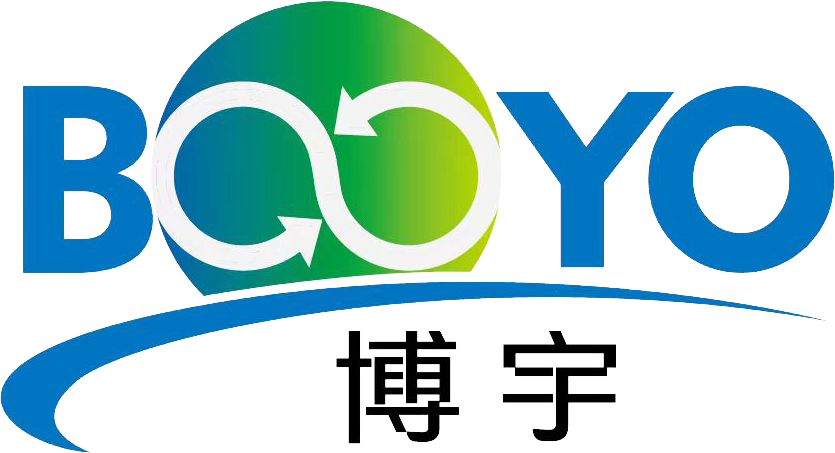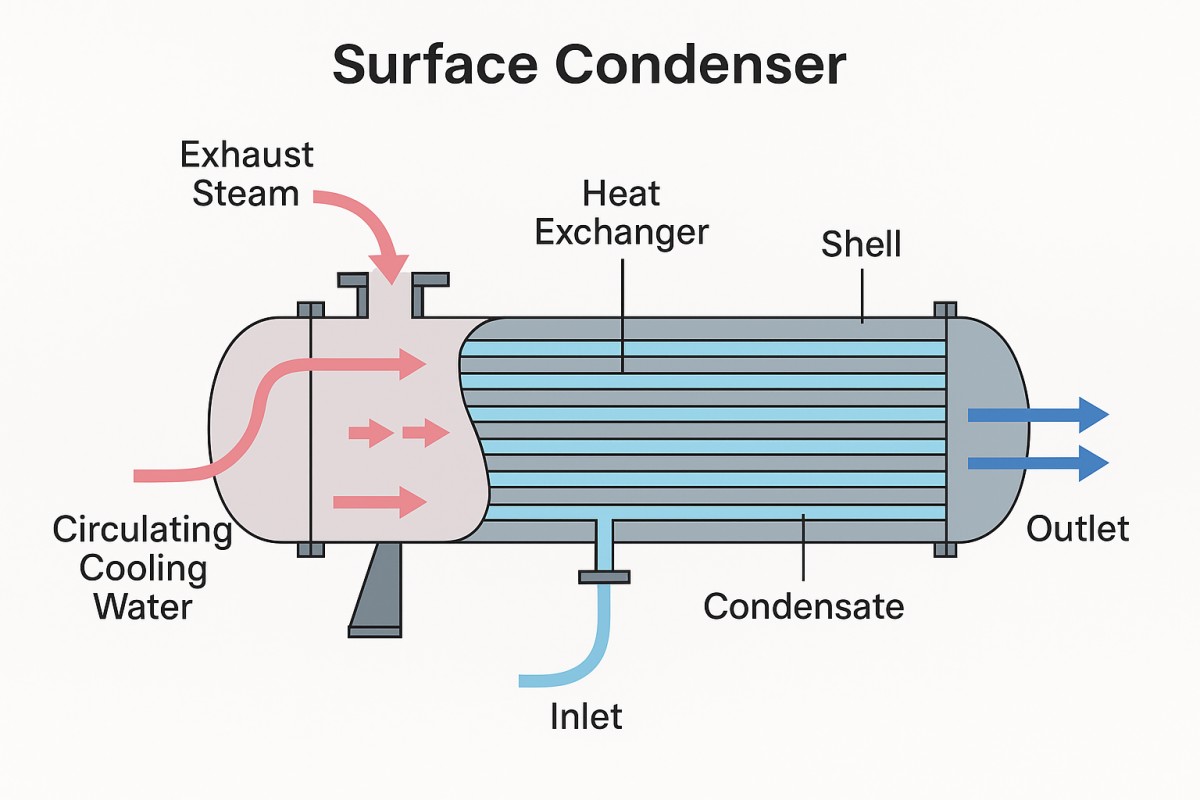
Our News
Find out about our latest news here.
Latest News
- ▶ Sulfur Degassing: Process Routes, Equipment, and Engineering Considerations
- ▶ Desander Skid Package for Oil, Gas, and Process Applications
- ▶ 185MW Condenser Successfully Completed Supporting APAC Pulp & Energy Development for APP Indonesia OK18
- ▶ Large Shell and Tube Condenser for Power and Process Industries
- ▶ Shell and Tube Heat Exchanger Cost Estimate: A Complete Guide for Buyers
- ▶ Iraqi Client Visited Boyu Industry for Technical Inspection of Condensers and Process Columns
Message
A surface condenser is a type of heat exchanger that uses a solid surface (typically metal tubes) to condense exhaust steam from a turbine without direct contact with the cooling water. It is widely used in thermal power plants, nuclear plants, and industrial steam systems because it ensures the separation of condensate and cooling water, maintaining water purity.
Working Principle of Surface Condenser in Power Plants

The working principle of a surface condenser is based on indirect heat exchange:
Exhaust steam from the turbine enters the condenser shell at low pressure.
Cooling water circulates through tubes inside the condenser.
Heat is transferred through the tube walls, causing the steam to condense into water (condensate).
Non-condensable gases are removed by an air extraction system to maintain vacuum.
The condensate is collected and returned to the boiler feedwater system.
Key Processes:
Steam path: Around the tubes
Cooling water path: Inside the tubes
Heat transfer mode: Conduction through tube walls
Components of a Surface Condenser
Shell – Houses the exhaust steam and provides structural integrity.
Tube Bundle – Contains hundreds or thousands of tubes for cooling water.
Water Boxes – Distribute cooling water into and out of tubes.
Tube Sheets – Secure the tubes at both ends.
Air Ejector or Vacuum Pump – Maintains vacuum by removing air and non-condensable gases.
Hotwell – Collects condensate water.
Design Features and Material Selection
Materials: Copper alloys, stainless steel, or titanium for tubes to resist corrosion.
Heat Transfer Area: Designed based on steam flow, cooling water temperature, and pressure conditions.
Vacuum System: Critical for maintaining turbine efficiency.
Types of Surface Condensers
Single-Pass Condenser: Cooling water flows through tubes in one direction.
Multi-Pass Condenser: Cooling water flows through tubes in multiple passes for better heat transfer.
Advantages of Surface Condensers in Power Plants
Improved Efficiency: Maintains low turbine exhaust pressure for higher power output.
Condensate Recovery: Pure condensate can be reused as boiler feedwater, reducing water consumption.
Separation of Fluids: Steam and cooling water never mix, ensuring water purity.
Adaptability: Suitable for seawater or freshwater cooling.
Applications
Thermal Power Plants (coal, gas, oil-fired)
Nuclear Power Stations
Industrial Cogeneration Systems
Maintenance and Performance Tips
Tube Cleaning: Prevent fouling and scaling to maintain heat transfer efficiency.
Vacuum Monitoring: Ensure air ejectors or vacuum pumps work effectively.
Corrosion Control: Use proper materials and water treatment.
Conclusion
A surface condenser in a power plant is essential for efficient power generation, condensate recovery, and maintaining the cycle’s heat balance. With proper design, operation, and maintenance, surface condensers significantly contribute to energy efficiency and environmental sustainability.
PROFESSIONAL CONSULTATION
If you are interested in our products and want to know more details, please leave a message here, we will reply you as soon as we can.